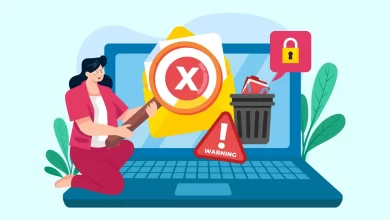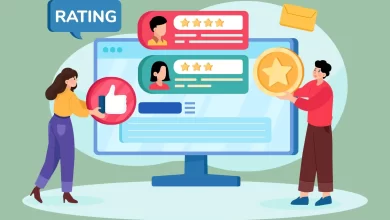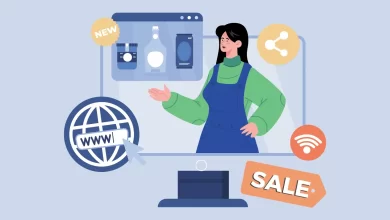The Ultimate Guide to Creating a Referral Program

What kind of restaurant would you rather go to — the one you see a social media ad for, or the one your best friend recommends to you in conversation?
If you’re like 90% of people who trust recommendations from friends over brand ads, you’d probably go with the place your friend suggested.
Now, imagine if you’re that restaurant brand. How do you encourage patrons to recommend your eatery? A stellar customer experience is an essential first step, but you’ll entice more referrals with an established referral program that incentivizes existing customers to refer new ones.
We’ll walk through the ins and outs of referral programs, why your business needs them, types of incentives and program examples, and how to get started with your own customer referral program.
What is a referral program?
A referral program is a word-of-mouth marketing tactic where businesses offer incentives like gift cards, free products, discounts, and commissions to existing customers to refer new customers to the brand.
The gist? You leverage one of the most powerful marketing tactics to generate sales and customer loyalty at a fraction of the cost of other marketing methods. For example, pay-per-click ads can run you thousands of dollars per month.
Referral marketing gives you more control over what you spend on your promotional strategies with referrals. Plus, they engage new and existing customers with benefits that boost order value and customer loyalty.
7 types of referral incentives
Referral incentives vary from program to program. They depend on your business needs and customer needs — a balance of the two. Referral incentives should entice customers to refer new leads but shouldn’t be too strenuous financially for your business.
For example, a 50% discount on future purchases is likely not worth offering, even if you get a new sale. Still, it depends on your profit margins and business goals.
Here are some common examples of referral incentives:
Gift cards
These are dollar values that customers can redeem to purchase your brand’s products or services. You might offer a gift card incentive for $20, $50, or $100 — whatever works for your budget and customer needs.
Free subscription period
If you’re a SaaS brand with subscription memberships, you might offer a customer a free month or two in exchange for referring a new client.
Discounts
This looks like a percentage-based discount on any or specific products that the customer can access once they successfully refer a new customer to the brand.
Commissions
These are flat- or percentage-based dollar amounts you pay customers for every sale they refer to your brand. This is more common for affiliates than customer referrals, although some brands treat them similarly.
Pro tip? Don’t use the same commission format or value for all your customers and affiliates. Here at Tapfiliate, we offer flexible commissions to accommodate the fact that not all referrals are equal in value. You could automate increases for your customers once they reach a specific order value of referral revenue. Or, if it makes sense for your business, you could change a percentage-based commission to a flat fee for a particularly picky affiliate.
Merchandise
This might involve physical products that you decide to give customers, or you might offer them options for products they can choose from. For example, a high-end retail e-commerce brand might send free clothing to people who refer new customers. They might also include a bonus accessory in their next order or allow them to pick a product themselves.
Loyalty points
Some brands have loyalty programs where customers can redeem loyalty points to purchase products and services. Think Starbucks — I’ll redeem the free espresso shot, please!
Tiered rewards
Should all rewards be the same? Not quite. Some brands offer tiered rewards to provide greater incentives for larger customer order values that come from referrals. Or, you might tier rewards based on the type of products a referred customer purchases.
So, what do these incentives look like in action?
5 referral program examples
Let’s look at some examples of e-commerce, SaaS, subscription-based, and B2B referral programs.
1. TrustedHouseSitters
TrustedHousesitters is an online app and web platform that connects pet owners with pet sitters across the globe. The membership fee ranges from $180 to $379 per year depending on the type of features you access (basic pet sitter, pet sitter with cancellation insurance, joint pet owner and pet sitter membership).
The company offers a referral program in which existing members can share personal referral links with friends to receive a 25% discount on the membership. If they successfully recruit a new member to the platform, they’ll receive two months free.


Why wouldn’t TrustedHousesitters offer a commission value instead? Those they reserve for affiliates, which, in their program, differ slightly in eligibility. Affiliates can earn up to 40% commission for every new member they bring to the platform, but you’ll need to have an established platform related to travel:


2. Nespresso
Nespresso sells coffee machines that brew coffee with pods containing ground coffee in various flavors, like hazelnut or vanilla. While the company has many brick-and-mortar locations, it generated over $75 million in revenue in March 2024 from online e-commerce sales.
At a pricey $100 to $300+ per machine, the company wanted to incentivize and appreciate customers who referred new buyers:


Nespresso’s referral program offers existing customers $50 worth of coffee to refer a new customer, while the referral benefit for the customer is either:
- $70 off a machine purchase
- Free capsule dispenser
- 5 free coffee sleeves
3. Tapfiliate
Tapfiliate is our affiliate and referral management software that helps brands like yours launch, manage, and optimize their partner programs. Since we know the world of word-of-mouth marketing so well, we knew that we needed a referral process to reward our loyal customers for referrals, too:


Since our software is subscription-based, we felt it was only fair to reward customers who referred new subscribers with recurring commissions. If a customer refers someone who completes our free 14-day trial and then signs up for one of our pricing plans, we reward them with a 30% recurring commission. “Recurring” means they get 30% of every monthly payment the new customer pays Tapfiliate for their subscription.
4. Degiro
Degiro is an online stock broker and investment platform that operates in many European countries, including Switzerland, Portugal, the Netherlands, Italy, and Germany.
The platform’s referral strategy offers a monetary bonus to anyone who refers new customers. The catch? The new customer must process a minimum value of transactions for the referee to receive the bonus. For example, Swiss customers will receive a bonus of CHF 50 for referring new people to Degiro’s platform:


Degiro saw serious numbers once they launched their referral program. Since they’re an international company, they also offered affiliate programs specific to each country they had customers in.
With so many referrals to track, Degiro turned to Tapfiliate as a one-stop-shop for everything affiliate management. The result? Exponential growth and revenue that hasn’t slowed down yet!


5. Walmart+
You know Walmart as one of the US’s largest department stores, in-person and e-commerce. The retail giant also offers a Walmart+ subscription service where members can access perks like free delivery, cheaper fuel, and exclusive sales that regular customers can’t access. The Walmart+ Referral Program offers promo codes with discounts to any member that successfully refers new members to the program:


The only thing we’d recommend to Walmart+? A little more transparency. It’s not clear what the promo code actually translates to in value, and customers usually want to know more about the benefits of a referral program before they put effort into promoting it. But then again, Walmart is a pretty big brand that might still generate tons of referrals regardless.
You’ve seen referral programs in action — ready to create your own?
6 Steps to Launch and Manage Your Referral Program
Happy customers usually share positive experiences and automatically refer new customers to brands they like, right? That is true, but that doesn’t mean you can create a referral program out of thin air. You’ll need to follow a few steps to get started.
Step #1: Establish objectives and target audience
Referral programs achieve so many benefits for business owners and brands. But a broad objective of “everything, please” isn’t easy to reach because it’s not specific enough. You might have referral program goals related to:
- Customer retention: If customers have a tendency to stop buying after a purchase or two, you might incentivize them to refer new customers for discounts.
- Customer acquisition: Do your existing customers already purchase as much as they’re willing? Time to expand and acquire new customers.
- Brand awareness: Customers who refer new customers will spread the word about your brand across their marketing channels and circles, which is great for brands who want more exposure in their industry.
- Higher sales values: Referred customers are known to spend more on purchases.
These are general referral program goals, but if you want our take? They’re not specific enough. Let’s say you want to acquire more customers. A more achievable and measurable goal could look like:
Acquire X new customers by X date.
Improve customer retention rates by X% by X date
Once you have your sales goals, refresh your team about your audience, specifically which segments you want to target for your referral program. If you think your younger audience is more likely to refer new customers, you’ll need to tailor marketing materials to appeal to that demographic (more on that later).
Step #2: Decide on an incentive
…and a value.
What are you willing to spend on referral marketing? You already have the advantage of a cheaper price tag compared to other marketing tactics. Still, you have a budget to follow, and can’t squander too many credits or products to the point where your referral program costs you more than it generates.
Our advice? Calculate the true value of a new customer to figure out how much of that value you’re willing to share with your customer who referred them. But on top of that, consider what your customers want when you decide on incentives.
You might even conduct an online survey to find out what kind of perks or incentives mean the most to them.
Step #3: Create branded assets and materials to share with customers
Now that you know what your incentives are and who you want to share them with, it’s time to structure your referral program.
First, you need to recruit customers to start referring your brand. To do that, you might create assets like:
- Infographics: Visual representations of the benefits customers and referrals will experience through your program
- Email templates: Generic email copy and images are to be automatically or manually sent to customers to invite them to your referral program.
- DM templates: Generic messaging to share with interested customers on your social media channels.
We’ll discuss promotional materials later, but these assets above cover the basics for inviting customers to your referral program.
But once they’re in, how will they refer new people to your brand? You’ll need to share referral codes, referral links, and perhaps even branded materials that communicate benefits specifically for the referred customer.
Now, do you need to do all this manually? Nope! There’s a better way.


Step #4: Automate recruitment with referral marketing software
Referral program software helps you create, manage, and optimize your referral program so you don’t have to spend hours on tedious tasks. Plus, its real-time reporting and analytics functions help you generate actionable insights to keep boosting revenue and efficiency in your referral marketing program.
For example, Tapfiliate’s automated referrals and partner recruitment let you create custom triggers to automate emails sent to your customers once they complete a desired action, like a first, second, or third purchase.
And if you integrate with your CRM platform? Those emails can go out to almost everyone who’s made a purchase from your business in minutes — no need to manually plug in customer details or import data.
Step #5: Promote your referral program
You might have all your existing customer data on your CRM, but what about all the other potential customers who might be interested in your program as well? Perhaps they made a cash purchase in-store and you don’t have their details. Or, a family member could have purchased a product for everyone at home.
Another possibility? Someone who has never purchased something from your brand could still convert into a paying customer and refer additional customers for the incentives.
That’s why it’s so important to consistently promote your referral program. Here’s what that looks like:
- Social media: Add a few social media posts about your referral program to your content calendar. You might feature a Reel testimonial about one of your customers and their referral perks or an infographic about all the benefits of joining your referral program.
- Email marketing: Notice any new lead form submissions on your website? Even if those aren’t existing customers yet, they’ll still see your email newsletter in your inbox. That’s a perfect opportunity to advertise your referral program.
- Content marketing: Search engine optimization (SEO) is a great way to build brand trust, authority, and buzz around your products. Produce content about industry-related topics to garner interest in your referral program. For example, if you’re an e-commerce business that sells shoes, you could publish an article about affordable summer footwear and link to your referral program at the bottom.
- PPC ads: Paid advertising isn’t a cheap marketing tactic. But if you generate new customers that refer additional ones with your ad spend? We’d say that’s money well spent. Experiment with a couple of keyword targets and audience criteria and assess performance as you go.
- Influencers and affiliates: These are brand advocates who are well-versed in your brand’s unique value propositions (UVPs) and regularly promote them. You could have them promote your referral program as well.
- PS: Tapfiliate’s multi-level-marketing features help you incentivize existing affiliates to recruit new affiliates to your program.
Step #6: Monitor and optimize referral program performance
Referral program? Launched. New customers? Trickling in. Wouldn’t you rather have them overflowing? Sounds like you need to track metrics to see how you can optimize your program.
Our personal faves?
- Referral rates: compare how many customer referral attempts turn into actual referred new customers.
- Conversion rates: compare how many people convert into customers compared to those who scroll past your content.
- ROI: assesses your total returns on investment compared to the money you’ve spent.
If you use a referral marketing platform like Tapfiliate, you can access reports on abundant metrics and performance data. Find out which customers refer the most new customers or highest order values, and compare performance across different affiliates.
Another way to assess performance? Talk to your customers! Find out if they’re happy with the referral program benefits or if there’s anything they would change. Use as many data-backed insights as you can to keep tweaking your program and optimize accordingly!
Launch a referral program today with Tapfiliate!
Referral programs are a breakthrough marketing tactic that gives you serious reach and revenue at such a low price. Bottom line? Every brand can use a referral program. However, a successful referral program requires a few moving parts to get you high conversion rates, sales, and overall revenue.
First off? You need a solid referral marketing software to keep your customers, marketing goals, metrics, and optimization insights in one place. And, it doesn’t hurt to have flexible commissions to engage customers and affiliates, branded assets for easy promotion, and automated workflows for even more time savings (ahem, Tapfiliate has all three).
Ready to reach new revenue heights with referral marketing? Try Tapfiliate’s 14-day trial today!




